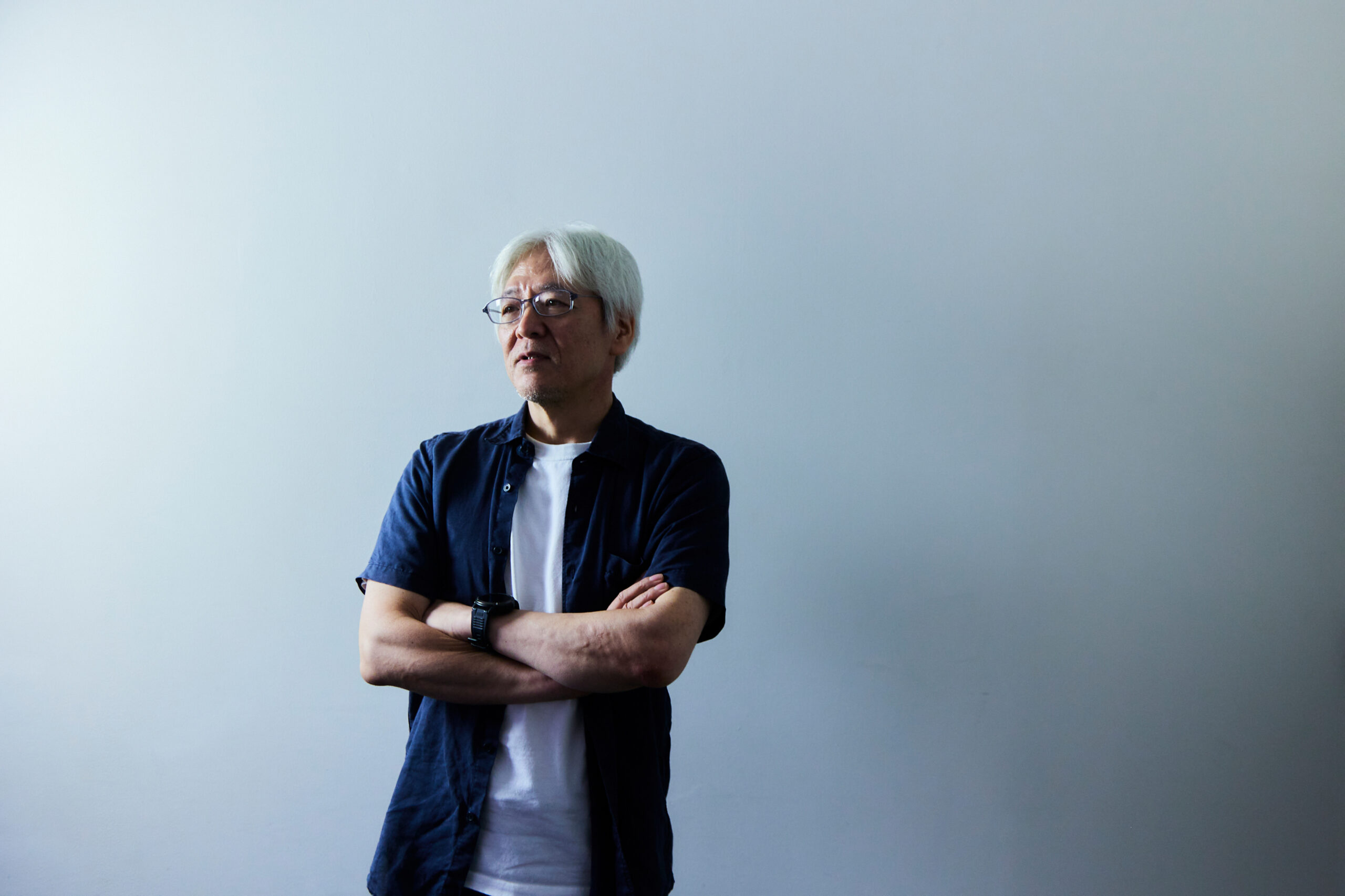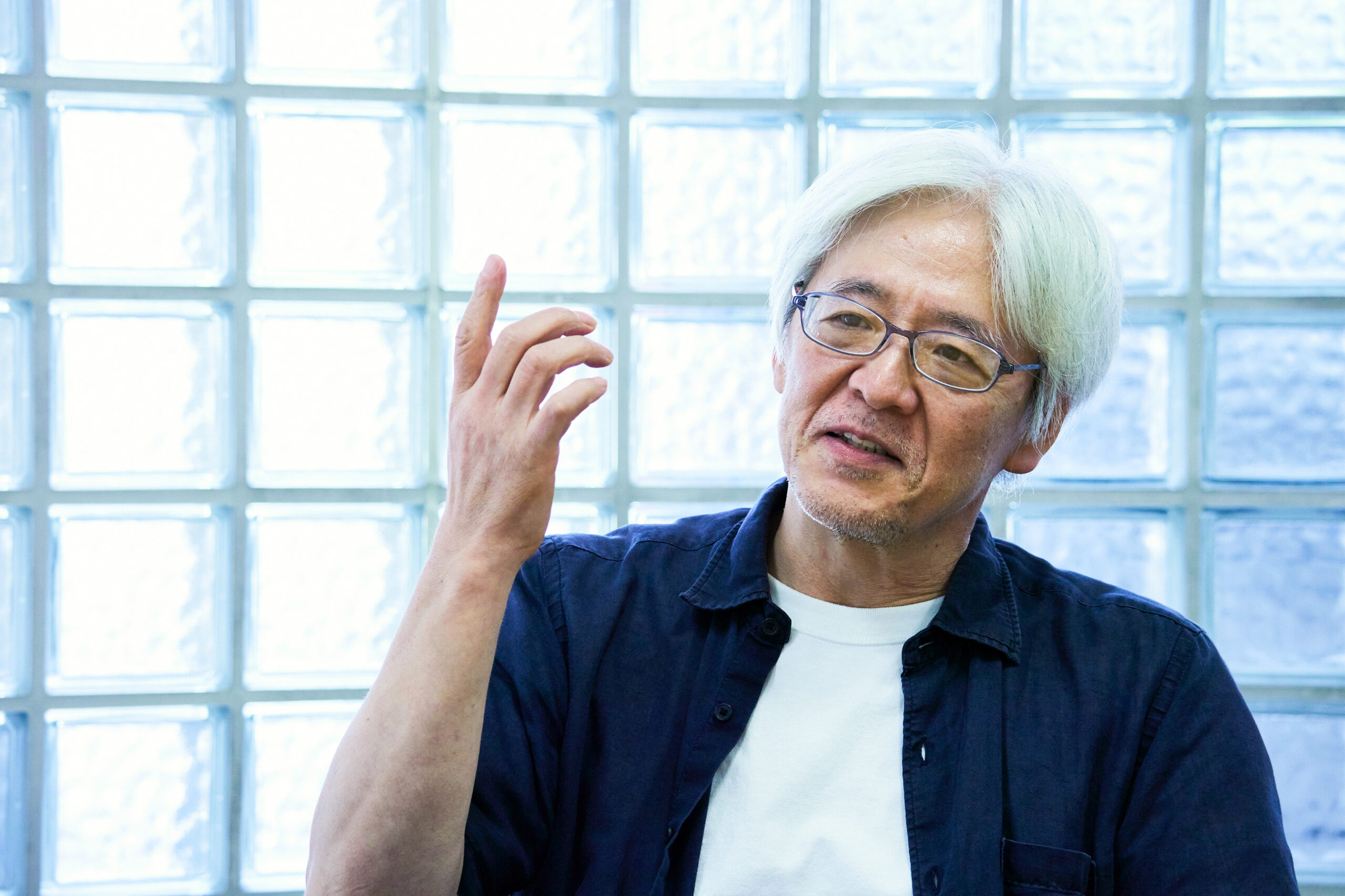
Kazuchika Kise’s Pride as the Creator of The Fourth “Ghost in the Shell”: His Focus as an Animator and Director #01
Text: Satoshi Asahara / Photo: Great The KabukichoA fully artificial cyborg body, not a humanoid robot. Kazuchika Kise is the artist who brought that “living” quality to the mysterious being known as Motoko Kusanagi with his high-quality animation. In his role as animation director for both Ghost in the Shell and its sequel, Innocence, Kise played a vital role in the pursuit of realism emphasized by director Mamoru Oshii. He made the bold move to revisit Motoko’s youth when directing Ghost in the Shell: Arise, finding new ways to showcase the series’ charms.
For all that he is one of the creators most familiar with Motoko as a character, he casually tells us that “I prefer drawing old guys.” And even with the manual dexterity that rivals a magician, he gives off an air of inability to lie in our interview. And so, we took the opportunity to dig into a thorough look at everything from the struggles of animators and directors to his outlook on modern animation.
#01 It's Hard To Talk About My Favorite Scene. But……
-You worked as an animator on the 1987 OVA of Shirow Masamune’s Black Magic M-66. Could you tell us about your first impressions of reading Ghost in the Shell when its manga was first published after that?
Kazuchika Kise (“Kise”): I bought Ghost in the Shell as soon as the compilation came out. To be honest, my impression was that it was complicated, and I didn’t fully get it. *laughs* There were notes all over the margins filled with specialist terminology, and I had never seen a lot of those words. So they just made it more confusing. And I remember struggling to comprehend the concepts relating to digital technology.
―You were the animation director on Shirow’s Black Magic M-66 and also worked on the script. Have you seen him take the same position on packing information into his work in a production setting, too?
Kise: Yes. Shirow did the storyboards himself, and there was a ton of additional information written out in their margins. He covered everything in great detail, including things like background on character designs and characterization, even outside the scope of any direct relationship to animation. That makes me feel like the information density in Ghost in the Shell is very much his style, although I also feel like it’s impressive he could incorporate complex ideas like the internet into manga back then at all.

―Were you always a fan of the science fiction genre?
Kise: Cyborgs were in vogue at the time, and one of my friends when I was in school had a Mac that they programmed games on. I had no idea what they were doing in that field and didn’t have any interest in using technology personally. But I did read popular sci-fi novels. I’ve also always loved drawing, ever since I was a kid, and that interest turned toward anime, starting with when I first saw Space Battleship Yamato (1974-1975) on TV. Anime specialty magazines were also just starting to come out at the time, so I grew more and more interested as I got more information on how anime was made.
―The original Ghost in the Shell manga was first serialized in 1989, with several anime series since then, winning fans all over the world. Having worked on the anime across several series, what do you see as the appeal of Ghost in the Shell?
Kise: The protagonist, Motoko, doesn’t age. I think that’s a big part of it.
―The premise is that she can always fight on the frontlines across eras since her entire body is cybernetic, excluding her brain and some of her spinal cord.
Kise: Yes. She can always be on active duty as a cyborg, and Public Security Section 9 is an all-expert group in the setting. That basis is exactly why we’re always able to have exciting concepts a step beyond the current cutting edge, no matter how far real-world technology advances.
―Do you have any specific titles you recommend to people just getting started with Ghost in the Shell?
Kise: The Ghost in the Shell film comes first if you check the anime out in the order it was made, but I don’t know if the “Oshii school” would be accessible for someone with no other knowledge at all. That’s an unknown variable. *laughs* So it might be easier to start with the TV series Ghost in the Shell: Stand Alone Complex. It’s compact, with 30-minute episodes, and the theme was to get Ghost in the Shell into living rooms, so it could be the perfect introductory version. Still, they’re all good series. I wouldn’t worry about the order, just check one out, and you’ll probably end up a fan.
―Compared to when the original manga began, everyone is online now, and it might be more common to easily follow the unique ideas like brain connections in Ghost in the Shell even at first glance, don’t you think?
Kise: Yes. I don’t think 1980s hacker knowledge is really familiar to people now, and it’s not guaranteed they’d follow talk about the internet from someone not holding a cell phone. But even normal people like me are more IT-literate now, and the original manga might feel more realistic now.

―What did you struggle with as an artist while making an anime from the original manga?
Kise: Well, concepts like cyborgs and optical camouflage existed before Ghost in the Shell, so you have to sort of stretch your imagination when portraying them. But I couldn’t really follow the idea of cyberbrains. Because it seems like it’s the first depiction of a direct brain internet connection, whereas series like Cyborg 009 had shown the idea of mechanizing the body as far back as the 1960s. I wasn’t sure how to depict that at first.
―Could you tell us of any scenes that you were particularly invested in, out of the titles you’ve worked on?
Kise: Ghost in the Shell is always very hard work, with a lot of labor involved. Honestly, it’s hard to talk about any favorite scene… If I had to pick, it might be the opening of the film Ghost in the Shell. The one where we see a cyborg assembled in a lab, eventually taking on Motoko’s form. Our character designer, Hiroyuki Okiura, did most of that, and it still looks good and draws me in even now.
―That opening really contains the concentrated essence of Ghost in the Shell, with Motoko turning off the optical camouflage and jumping off a building. Were there any characters you enjoyed depicting while you worked as an animator?
Kise: Probably not Motoko. I had more fun drawing the old guys in Section 9. I started my career with an animation studio called Anime R, and our president was Moriyasu Taniguchi, a famed artist who specialized in middle-aged men. That naturally inspired me to want to draw old guys in a way that looked cool, too. That’s why I liked Togusa out of the cast of Ghost in the Shell, since he’s mostly human. His human emotions are easier to follow than Motoko’s, so I never get tired of drawing him. *laughs*
Continued to #02 The True Meaning of a PPPK Command From Mamoru Oshii
KAZUCHIKA KISE
Born March 6, 1965. A native of Osaka Prefecture. Joined Anime R after graduating high school. After serving as animation directior on productions including Zillion, he changed jobs to work with Production I.G on Patlabor: the Movie. In addition to working on mega-hit films including Rebuild of Evangelion and Your Name as an animation director, he has also taken on recent roles in television anime series including The Fire Hunter and Heavenly Delusion. Currently a director of Production I.G, Inc.

